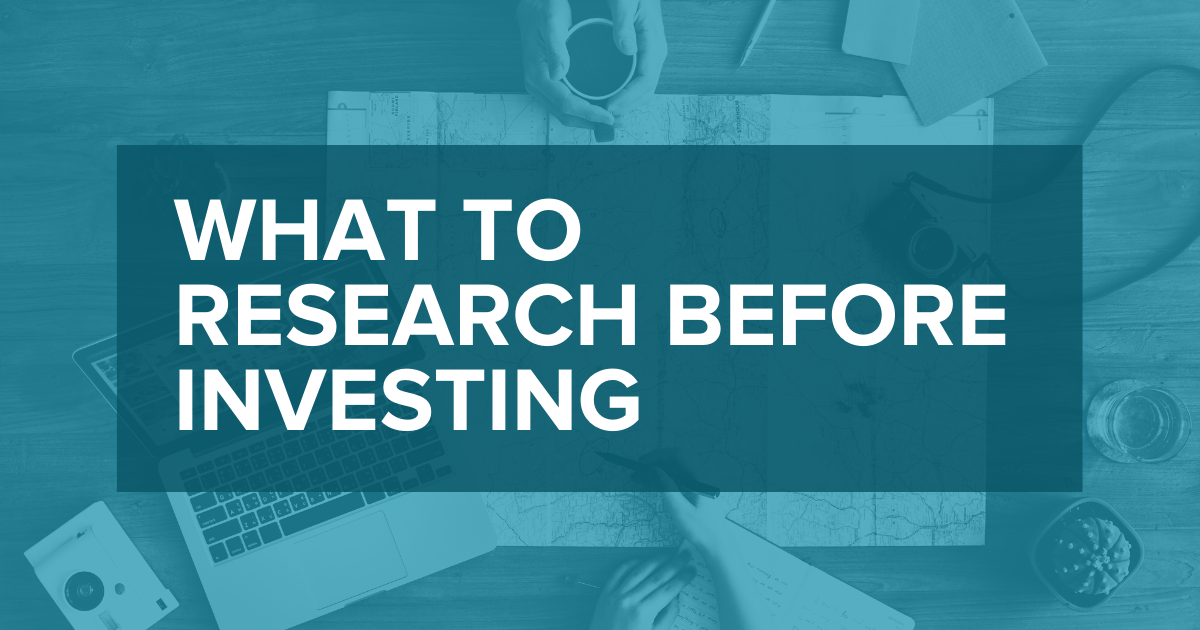Not everyone likes doing research, but every successful real estate investor understands that knowledge is money. Fully understanding the neighborhood and county you want to invest in will help you find the best deals and ensure that you’ll be able to find a buyer or renter when the time comes- or the data will tell you to find a different area to invest in!
For example, there’s no point in starting a rental portfolio in a high vacancy city or investing in a fix and flip property in an area with low housing demand. Every real estate deal is different and will depend on your budget and financial goals, but here are a few key pieces of data to focus on that will help you find identify the right opportunity for you.
Understanding The Real Estate Economics
The first place to start is the widely available general market data. If you’re looking to sell a fix and flip or new construction project, then you’ll want to look at stats like average home sale price, average days homes spend on the market, and percent of homes being sold at or above listing price.
Understanding the real estate economics of the area allows you to see what a fair purchase price would be, as well as strategize your renovations or construction to reach a certain resale price that matches what other homes in the area go for. You don’t want to over-improve the property and end up pricing yourself out of the market, forcing yourself to take a financial hit in order to find a buyer.
The stats you want to research change if you’re looking to own rental property, in which case you should check out the area’s average rental prices, average vacancy time, and overall vacancy percentage rate. Obviously an area with a high average rental price means good news for the property’s ability to generate passive monthly income, but if the area has high average vacancy time or high vacancy percentage then you could find yourself losing money without a tenant or being forced to lower the rent just to occupy the space.
Understanding The Larger Economic Situation
It’s one thing to know the real estate economics of the area you’re looking to invest in but understanding the area’s general economy can help you predict market shifts and make smarter investment decisions.
Some of the most important stats to look at include the area’s average household income, unemployment rate, and the population change rate. While some investors may think this is extra legwork, these kinds of stats shine a light on current problems an area may be facing and explain why it would make for a good or bad real estate investment.
For example, New York City seems like an excellent place to start a rental portfolio due to the very high average household income and low unemployment rate- however, 2020 has seen tens of thousands of people flee the city due to COVID and begin suburban living, which should cause some investors to more carefully consider investing in an NYC rental property.
However, a city like Virginia Beach, VA currently has an unemployment rate lower than the national average, a higher than national average household income, and a steadily increasing population, making it a stable choice for real estate investments.
If you want to maximize your potential profits, figure out if the area you want to invest in is currently a buyer’s market or a seller’s market. When housing supply is high and demand is low, it’s a buyer’s market and will benefit investors looking to begin their fix and flip adventure. When housing supply is low and demand is high, it’s a seller’s market and is the best time to sell your investment for a maximum listing price.
However, too much supply or demand could make the market overly competitive for the final sale price, forcing you to lower the asking price and eat into your profit margin just to unload the property. Websites like Redfin provide an accurate snapshot of an area’s real estate market- you can click on their inventory tab to see all homes for sale in a given market and compare current inventory to previous months or years, along with average prices. For example, in Ocean County, NJ the current average home sale price is up 24% from the previous year and there has been a 35% increase in the amount of homes sold compared to the previous year. This means Ocean County, NJ is currently a seller’s market, making it an excellent choice for new construction projects or value-add flips that can take advantage of the county’s trendy real estate.
Local Area Experts
Asset Based Lending is dedicated to understanding the markets we lend in so we can offer the highest quality advice to our borrowers. Our loan officers and underwriters are experts in our lending territories, allowing them to offer the most flexible and reliable hard money loans around. Whether it is a fix and flip, new construction, or cash out refinance, ABL’s team can tailor a loan to match your specific project. We specialize in closing deals quickly and offer some of the most competitive rates for real estate loans to ensure you never miss out on an investment opportunity. If you are a real estate investor looking for high quality hard money loans, contact us today.







0 Comments